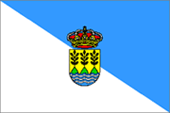The Market Town of Albox ... is a municipality in the province of Almeria, Andalucia, mainland Spain. The name Albox comes from the Arabic for forest and sounds similar to the Spanish phrase for the forest – el bosque. Traditionally a market town, Albox is located approximately 130 kilometres from Almeria which is the capital of the province of the same name. The Albox town hall is situated in the Plaza Garcia Aro. Geography
DemographyAccording to the latest census conducted on the 1st January 2006 by the I.N.E (Insituto Nacional de Estadistica), there were 11,000 inhabitants (5,816 male and 5,184 female). The electoral roll from the municipal elections of May 2007, showed 8,635 voter, of which 7,175 were Spanish nationals, 988 foreigners and 472 from European member states. It should be taken into
account that there are many thousands of people living in the area that
were not counted by the last census. Taking this into consideration, it
is estimated that the real population is between 11,000 and 15,000
people. The city of Almeria is Andalucia's most eastern capital. Years ago, it was not as well known by tourists as other capitals like Malaga, Sevillle, or Granada. However, that has changed drastically in the last while with its growth as a major holiday area. Almeria holds a great deal of charm and is steeped in history. It is located at the foot of a mountain range which is crowned by the magnificent Alcazaba, an Arab fortress built by the Caliph of Cordoba, Abd-erRahman with three huge walled enclosures (in the second of which are remains of a mosque, converted to a chapel by the Catholic kings). THE ALCAZABA In times of war, the Alcazaba could hold an army of more than 20,000 men. From here, there is a good view of the city's famed cave quarter, Barrio de la Chanca and of the strange fortified cathedral with its gothic style construction and renaissance facade. The Alcazaba dominates the city and is the main reminder of Almeria's heyday when it was the major port of the Cordoba caliphate. It grew wealthy on trade and the textile industry with silk woven from the silkworms of the Alpujarras. Connected to the Alcazaba, the Muralla de Jairan was built in the 11th century by Jairan, the first ruler of the Almeria taifa; the wall descends the valley on the north side of the Alcazaba and climbs the Cerro de San Cristobal on the far side. THE CATHEDRAL
In
1489, the city was taken over by the Catholic monarchs and its Muslim
populace expelled soon thereafter. Almeria's cathedral is at the heart
of The
cathedral was built during an era when the southern Mediterranean Situated in the centre is the great altar with its wealth of
priceless art work including a tabernacle dating from the 18th century,
designed by Ventura Rodriguez, paintings by Alonso Cañón; a typical
Andalucian The spacious interior has a Gothic ribbed ceiling and makes use of jasper and local marble in some of its baroque and neo-classical trimmings. The chapel behind the main altar contains the tomb of Bishop Villalan, founder of the cathedral, and is another work of de Orea, as are the choir (with its stalls made out of walnut wood) and the Sacristia Mayor with its fine carved stone roof, windows and arches. MUSEUMS Almeria as one of the eight provincial capitals of Andalucia houses various museums. True historians will appreciate the Almeria Museum which contains numerous objects discovered by the well-known Belgian mining engineer, Louis Siret. The contemporary art museum is well worth visiting. Take a stroll around Almeria and discover for yourself numerous examples of beautiful street art.
RESTAURANTS AND CUISINE
Almeria is also well-known for its restaurants and local cuisine. The best place for reasonably priced restaurants and bars is around the Puerta de Purchena at the end of Paseo de Almeria. In the old town you can find many good bars and cafes near to the town hall. Gastronomic specialities include "Gurullos" (stew with pasta), "Trigo" (stew with grains of wheat, pork, beans and herbs), "Gachas" (hot and spicy clam stew) and "Escabeche e Sardines" (fresh sardines in hot sauce). As well as cultivating tourism over the past decade, Almeria has also cultivated innumerable plastic-covered greenhouses and now produces the bulk of the province's fruit and vegetables, much of it for export. Almeria begs to be explored. Spend some time enjoying its winding streets, visiting its fine museums, and dining out on the local cuisine. You will want to return time and time again.
©2010-MagicGraphics@asia.com - All rights reserved
Learn Spanish Fast
Free CSS Templates
Contact us
Alhambra Palace
Photos
PLEASE CONTACT US FOR FULL DETAILS AND AVAILABILITY
Free Website
Picture gallery
How Do I Get There
Featured Cams
➤
Home
All About Albox-Almeria
Forecast
➤Cabo de Gato National Park
MagicGraphics@asia.com
Satellite
$500-Websites: ➤MagicGraphics
|
|








